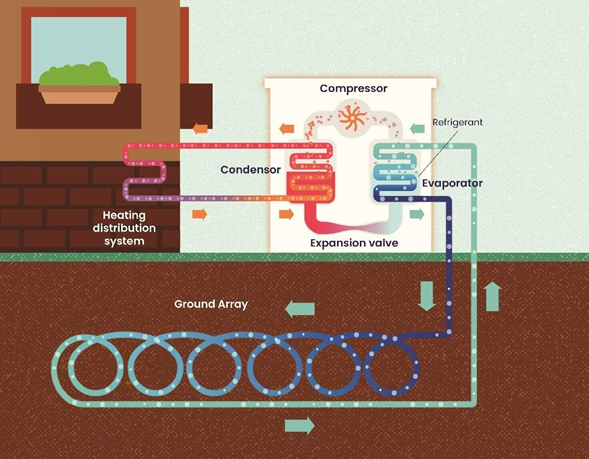I’m always the coldest in my house. It’s a running joke amongst my housemates that I just complain about it for attention. But in my defence, the flat is draughty and poorly insulated, with no real incentive for the owner to fix it. We are far from the worst case, and this is common across UK households – our housing stock is renowned for its poor energy efficiency.
We’re also heavily dependent on fossil fuels. Homes account for nearly a quarter of UK emissions, with around 80% depending on natural gas for heating, one of the highest rates in Europe[1].
Despite this alarming situation, we’re lagging behind our European neighbours on the installation of low-carbon home heating technologies, In fact, due to the installation of gas boilers continuing apace (1.7 million a year), we’re going backwards. In addition to this, rates of home insulation flatlined in 2013 due to Government policy. These accolades don’t paint a promising picture in terms of our supposed climate leadership.
Decarbonising our homes is one of the clearest win-wins for society in the green transition. A mass retrofitting programme to improve energy efficiency and replace fossil fuelled heating appliances would not only make a serious dent in our emissions, it would protect people already struggling to pay their energy bills from price hikes, such as the recently announced 50%. There’s huge benefits in improving comfort and quality of life, and providing thousands of meaningful jobs across the country.
Thankfully, we already have the technologies we need to grasp this opportunity. Heat pumps, often described as ‘reverse fridges’, perform the seemingly magical but very real task of converting heat from either the air, ground, or water and release it at higher temperatures to warm the home. Not only do they run on electricity, enabling zero-carbon operation with renewable sources, they have about half the lifetime emissions of a natural gas boiler, including manufacturing, transportation, maintenance, use, and disposal[2]. They’re also suitable for installation in every housing type in the country. Can you tell I’m a fangirl? (does that pun work? They use fans…).

Diagram of a ground-source heat pump taken from Possible’s 2019 ‘Powering Parks’ report.
Researchers from Imperial College’s Energy Futures Lab recently released a report urging the government to support the growth of the heat pump market in the UK , encouraging rollout over the less well-developed hydrogen option. They’re clear that this will need significant support from the Government, as heat pumps are currently much more expensive than gas boilers, and lack of finance and installers with the right skills are significant barriers to uptake.
However, on the plus side, the manufacturing sector has expressed readiness for growth in heat pump production, due to their maturity as a technology with well-established supply chains, and similarities in materials and components to air conditioners, fridges, and even traditional boilers.
So, can we get it done? The Government has set a commendable target for the installation of 600,000 heat pumps a year by 2028, which aligns with the Committee on Climate Change’s recommendation for 19 million heat pump installations to meet the UK’s decarbonisation targets (in reality, at current rates, achieving this would take 700 years). But without consistent financial support to provide a clear signal to the industry, as has driven higher uptake in Europe, it’s unlikely this dream will become a reality.
In recent years initiatives such as the Green Homes Grant and the Renewable Heat Incentive have fallen well short of the mark (3000 and 63,000 heat pump installations respectively)[3]. The recently published Heat and Buildings Strategy was not received particularly warmly either, with a big question mark over whether £5,000 or £6,000 grants towards heat pump installations will be enough, especially for people on lower incomes.
Retrofit for energy efficiency and low-carbon heating can help us tackle the multiple crises of cost-of-living, poor quality housing, and climate change, and it’s imperative that we take the opportunity. On a more selfish note, it might mean being able to ditch my puffer jacket for zoom calls.
The Supply Chain Sustainability School is bringing together Partners to discuss this topic and related issues in our new Retrofit Group. If you would like to find out more about joining the group, please contact paul@supplychainschool.co.uk.
[1] Gross, R. and Hanna, R. (2019) ‘Path dependency in provision of domestic heating’, Nature Energy, 4(5), pp. 358–364.
[2] Sevindik et al, 2021, A Comparative Environmental Assessment of Heat Pumps and Gas Boilers towards a Circular Economy in the UK, Energies 14(11), 3027.
[3] BEIS figures, reference in Imperial report.

Naomi Pratt
Consultant Researcher
naomi@actionsustainability.com

This was posted in All Topics, Energy & Carbon, ISO 20400 Sustainable Procurement
Our Head of Climate, Dr James Cadman, shares his insights on how organisations can effectively embed carbon reduction into their sustainable procurement practices using the ISO 20400 framework.
Read Article
This was posted in Energy & Carbon, ISO 20400 Sustainable Procurement
Developed by Action Sustainability, "Responsible Sourcing of HVO – A Comprehensive Guide" explores how to responsibly procure Hydrotreated Vegetable Oil (HVO).
Read Article
This was posted in Energy & Carbon, Sustainability Strategy
Action Sustainability is partnering with SKAO for the launch of the CO2 Performance Ladder pilot in the United Kingdom.
Read Article